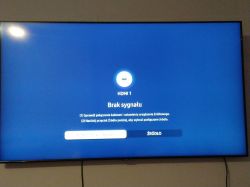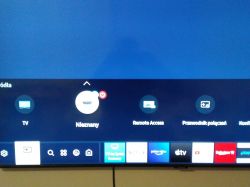FAQ
TL;DR: A 5 m HDMI run caused 4K display issues, and the fix was to "buy a special DisplayPort to HDMI converter adapter." Use an active DP‑to‑HDMI adapter for GTX 1660 Super to Samsung UE55TU8502; passive cables often fail. [Elektroda, nomudrek, post #19228930]
Why it matters: If you're connecting a GTX 1660 Super DP to a Samsung TU8502 HDMI and seeing "No Signal," this shows what works and why.
Quick Facts
- For 4K 60 Hz from DisplayPort to HDMI, use an active DP 1.2/1.4 → HDMI 2.0 converter; passive leads are limited. “Active” fixes handshake and bandwidth. “DisplayPort to HDMI Adapters”
- HDMI 2.0 provides up to 18 Gbps, enough for 4K60 4:4:4 or HDR formats when devices and links support it. “HDMI 2.0 Overview”
- HDMI sets no maximum cable length; long runs often need active or optical HDMI to maintain signal integrity. “How long can an HDMI cable be?”
- DP→HDMI cables are unidirectional; they must run from a DP source to an HDMI display, not the reverse. “Are DisplayPort to HDMI cables bidirectional?”
- In Windows, use Settings > System > Display > Detect, or Win+P to choose Duplicate/Extend when the TV is connected. “Set up multiple monitors in Windows”
Why do I get "No Signal" from GTX 1660 Super DisplayPort to my Samsung UE55TU8502 HDMI?
Most DP→HDMI cables are passive and rely on DP++ and short runs. At 5 m, signal loss and handshakes can fail. Many TVs expect HDMI 2.0 timing that passive leads cannot deliver at 4K60. Use an active DP‑to‑HDMI 2.0 converter and a certified HDMI cable. Also confirm the cable is DP‑to‑HDMI, not HDMI‑to‑DP. “DisplayPort to HDMI Adapters”
Do I need an active DisplayPort‑to‑HDMI adapter for 4K 60 Hz?
Yes. Passive DP++ adapters only translate pins for HDMI 1.4‑class signals. For 4K60 on a TV, use an active DP 1.2/1.4 to HDMI 2.0 converter. It regenerates TMDS and handles clocking/HDCP correctly. “Use an active adapter for 4K60” is standard guidance. “DisplayPort to HDMI Adapters”
How do I force Windows to detect my TV over HDMI?
Try this quick sequence:
- Select the TV’s HDMI input, then in Windows go to Settings > System > Display > Detect.
- Press Win+P and choose Duplicate or Second screen only.
- If the screen stays black, press Win+Ctrl+Shift+B to reset the graphics driver. “Set up multiple monitors in Windows”
The image shows during boot, then disappears in Windows. What’s going on?
When drivers load, the GPU may switch to a mode the TV or passive cable cannot sync. That causes a blank screen. Boot with only the TV connected, reset the driver (Win+Ctrl+Shift+B), then set 1920×1080 60 Hz. Reconnect other displays after it works. “Troubleshoot black screen or blank screen errors”
Will a 5 m HDMI cable work reliably for 4K from PC to TV?
HDMI doesn’t define a maximum length. Longer cables vary by build and bitrate. For 4K60, many setups need certified Premium High Speed cables or active/optical HDMI for stability. If 5 m fails, shorten the run or use active gear. “How long can an HDMI cable be?”
Are DisplayPort‑to‑HDMI cables bidirectional?
No. A DP→HDMI cable only works from a DisplayPort source (GPU) to an HDMI sink (TV). It will not work from HDMI source to DP display without an active converter. Check the arrow or labeling for direction. “Are DisplayPort to HDMI cables bidirectional?”
Could HDCP be the reason my TV shows no image?
HDCP handshakes can block protected video and sometimes trigger black screens. Desktop should still appear with a proper link. If playback fails, update GPU drivers, power‑cycle devices, and try a different adapter or certified cable to restore a clean HDCP path. “Troubleshooting HDCP”
What adapter should I buy for GTX 1660 Super → Samsung UE55TU8502?
Choose an active DP 1.2/1.4 to HDMI 2.0 adapter that states 4K 60 Hz and HDCP 2.2 support. Pair it with a certified HDMI cable. Brands like Club 3D, Accell, or UGREEN make reliable units. Keep HDMI runs short when possible. “DisplayPort to HDMI Adapters”
How can I quickly test if the cable is the problem?
Test at 1920×1080 60 Hz first. Try a shorter HDMI cable. Verify the lead’s direction (DP→HDMI). Move the adapter and cable to another HDMI display. If a short, certified HDMI works, your 5 m link needs an active adapter or active HDMI. “DisplayPort to HDMI Adapters”
How do I set the Samsung UE55TU8502 to accept 4K 60 Hz from a PC?
Enable Input Signal Plus (HDMI UHD Color) on the HDMI port you use. Open Settings > General > External Device Manager > Input Signal Plus, and toggle it for that port. Then set the PC to 3840×2160 at 60 Hz. “Input Signal Plus (HDMI UHD Color)”
Does the GTX 1660 Super send audio over DP→HDMI?
Yes. DisplayPort carries audio, and active DP→HDMI adapters pass it through. In Windows, select the TV as the default playback device once the link is active. Use an adapter that lists multi‑channel audio support. “Audio over DisplayPort”
Win+P does nothing and the TV detects a device, but no picture. What else?
Open NVIDIA Control Panel > Display > Set up multiple displays. Enable only the TV first, apply, then add your monitor. Update drivers, and disable G‑SYNC for testing. Switch to 8‑bit RGB or YCbCr 4:2:0 if the TV refuses 4:4:4. “Configure multiple displays in the NVIDIA Control Panel”
What bandwidth and modes can HDMI 2.0 carry from my PC?
HDMI 2.0 supports up to 18 Gbps. That fits 3840×2160 at 60 Hz 4:4:4 8‑bit, or HDR formats with chroma subsampling. Your adapter and cable must both sustain that bandwidth for stable results. “HDMI 2.0 Overview”
Thread takeaway: what actually solved it for users like me?
Users reported that 5 m passive leads failed at 4K. The working fix was to “buy a special DisplayPort to HDMI converter adapter,” then use a proper HDMI cable to the TV. This change restored a stable picture. [Elektroda, nomudrek, post #19228930]




